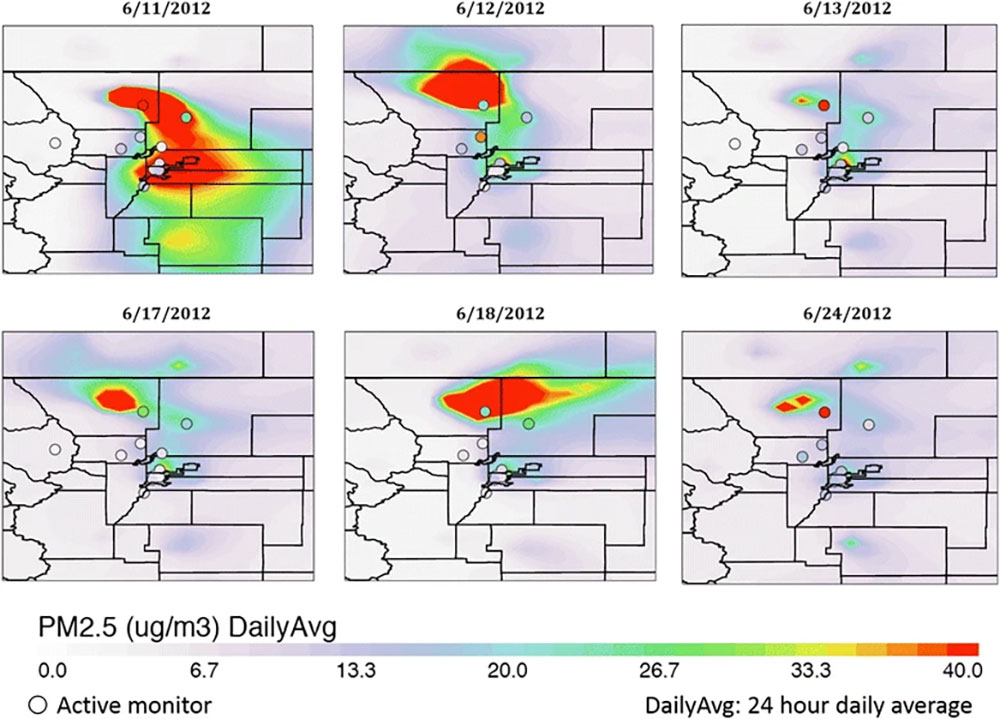Connecting Health Outcomes Research and Data Systems (CHORDS)

This example demonstrates how researchers have used both state and national data sources to study wildfire-related exposures and human health outcomes. Local PM2.5 levels were linked with state level hospital data for respiratory and cardiovascular outcomes.
Summary:
Alman et al. (2016) examined associations between local PM2.5 levels and emergency department (ED) visits for respiratory and cardiovascular outcomes during the 2012 Colorado wildfires (June 5, 2012 – July 6, 2012). Health outcome data were obtained from the Colorado Dept of Public Health. Hospitalizations and ED visits for six respiratory and seven cardiovascular outcomes were identified using ICD 9 codes. Hourly PM2.5 concentrations were modeled using Weather Research and Forecasting Model with Chemistry (WRF-Chem). Patient addresses were geocoded to 12 km grids and linked to exposure estimates.
| Exposure Data | Health Data |
|---|---|
| Satellite Data Sources: | |
| Weather Research and Forecasting Model with Chemistry (WRF-Chem) (modeled hourly PM2.5): | Colorado Department of Public Health and Environment |
| Model for Ozone and Related chemical Tracers (MOZART-4) | |
| National Center for Environmental Protection's North American Mesoscale System (NCEP/NAM) | |
| NCAR Fire Inventory (FINN) with the burned area product from the SMARTFIRE framework | |
| North American Land Data Assimilation System (NLDAS) |
Supporting Publication:
The Association of Wildfire Smoke with Respiratory and Cardiovascular Emergency Department Visits in Colorado in 2012: a Case Crossover Study
Alman, B. L., Pfister, G., Hao, H., Stowell, J., Hu, X., Liu, Y., & Strickland, M. J. (2016). The association of wildfire smoke with respiratory and cardiovascular emergency department visits in Colorado in 2012: a case crossover study. Environmental Health, 15(1), 64. doi:10.1186/s12940-016-0146-8 [Abstract]


